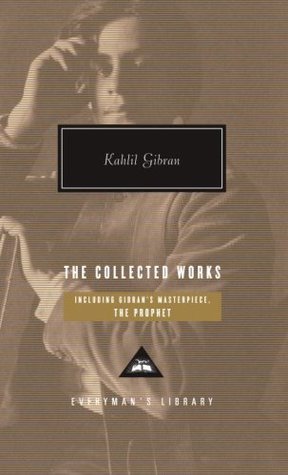
The Prophet
Book Description
A stranger stands atop a hill, ready to share his wisdom before leaving a city that has imagined him a prophet. Each heartfelt word resonates through the hearts of people from all walks of life—love, freedom, joy, and sorrow mingle in his poetic revelations. Conversations bloom into life, capturing the complexities of existence and the beauty of human connections. As the sun sets, tension rises; will his insights bring healing or division? In a world craving truth and understanding, can the essence of his messages inspire transformation, or are they destined to fade away like whispers in the wind?
Quick Book Summary
"The Prophet" by Kahlil Gibran is a lyrical collection of philosophical essays delivered by Almustafa, a wise prophet preparing to leave the city of Orphalese where he has lived for twelve years. As the townspeople gather, they ask his insights on pivotal aspects of human existence: love, marriage, work, freedom, sorrow, and more. Gibran’s language is poetic and evocative, blending spiritual wisdom with practical life counsel. Each discourse is imbued with compassion, gentle humor, and an acknowledgment of life's paradoxes. The book weaves together personal and universal truths, inviting readers to contemplate the depth of their own experiences and connections. Ultimately, "The Prophet" serves as a timeless spiritual guide to living mindfully, loving deeply, and embracing both the joys and sorrows of life.
Summary of Key Ideas
Table of Contents
The Nature of Love and Relationships
Almustafa, the central figure of "The Prophet," stands on the brink of departure from Orphalese, prompting the townspeople to seek his wisdom. In response, he addresses various facets of life, speaking with poetic clarity on themes such as self-discovery, belonging, and the divine spark within human hearts. His gentle yet profound teachings encourage readers to look inward and recognize the interwoven tapestry of individual experience and higher purpose. Each conversation, delivered with humility, helps the townspeople see their lives anew and confront the uncertainties of existence with grace.
The Balance of Joy and Sorrow
One of the book’s enduring themes is the exploration of love and relationships. Almustafa presents love as both uplifting and challenging, describing it as a force that can both "crown you and crucify you." He urges embracing both the rapture and the pain that genuine connection brings. Relationships, he explains, flourish when individuals remain both independent and united, "like the pillars of a temple" that support the structure but do not encroach upon one another’s space. Marriage, friendship, and community are cast as sacred bonds, built on mutual respect, freedom, and shared growth.
Work, Freedom, and Responsibility
Gibran masterfully weaves joy and sorrow into a single tapestry. Almustafa teaches that happiness and pain are not opposites, but inseparable threads in the human fabric. He reassures the townspeople that their deepest sorrows carve out space for greater joy, just as joy reveals the depths of past suffering. Through poetic metaphors—like the cup that must be emptied before it can be filled—the prophet frames grief as an essential part of the soul’s journey, allowing for healing, resilience, and the appreciation of fleeting moments of happiness.
Wisdom for Everyday Living
Practical wisdom features prominently alongside spiritual insight throughout "The Prophet." Almustafa discusses work not merely as a duty, but as an opportunity to express love and serve the community. He speaks on freedom as a state achieved through discipline, not license, and cautions against letting material concerns bind the spirit. The prophet addresses subjects like giving, eating, clothing, and crime with a balance of idealism and realism, urging mindfulness and compassionate action. Together, these teachings form a holistic guide for living ethically and authentically.
Letting Go and Spiritual Growth
As Almustafa prepares to leave, he encourages the townspeople to let go, teaching that true spiritual growth comes with accepting change and uncertainty. Attachment, he suggests, can lead to suffering if it prohibits growth. The theme of impermanence is woven throughout his farewell, reminding listeners that wisdom, once spoken, does not belong to the prophet but is meant to be lived and shared. The final message is one of hope and spiritual awakening: by embracing both the light and shadows of life, people can find meaning, unity, and peace within themselves and their communities.
Download This Summary
Get a free PDF of this summary instantly — no email required.





